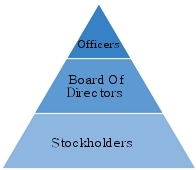As large employers enforce return-to-office mandates, smaller employers are leaning on flexibility to compete for talent.
According to a recent study conducted by hybrid work software provider Scoop, nearly three quarters of organizations that employ fewer than 500 employees offer full flexibility over where to work, compared to just a third of medium-size businesses and 17% of those with more than 25,000 staff. Furthermore, while a third of midsize businesses require their staff to be in the office full-time, that number drops to just 12% among small businesses.
“As a startup, you are often not profitable, you have less cash flow coming off of operations, it’s harder for you to hire because you don’t have a big brand and machine and inbound recruiting, so the ability to recruit employees that live in any location—and not spend money on offices—is attractive,” says Scoop’s CEO and cofounder Rob Sadow. “When you’re a much bigger company, operations get more complex, you have lots of teams and groups that are trying to interface and collaborate, and being in-person becomes that much more valuable.”
Larger incumbents also tend to have more entrenched workplace norms and processes, adds Sadow, making it harder for them to transition to a flexible work arrangement compared to those with a shorter history. Requiring staff to transition back into the office, however, often comes with added pressure to provide a more competitive salary and benefits package.
“Companies that require a lot of office time may feel like they have to pay a premium to make up for the fact that they’re requiring more office time,” Sadow says, adding that this dynamic leaves room for smaller employers to maneuver. “Small companies are scrappy, they don’t have a lot of financial resources, and so they’ll use any tool at their disposal to attract great talent, and flexibility is one of those tools.”
Paying a Premium for In-Person Work
In recent months job postings at the highest end of the pay scale have increasingly come with in-office work requirements, especially within industries where top earners are concentrated within leadership roles.
“When we look at the slice of $200,000-plus income earners, for them in-office job postings increased substantially,” says John Mullinix, the director of growth marketing for Ladders, a job site that lists six-figure roles.
In the last quarter of 2023, Ladders witnessed a 93% increase in top-paying positions that required five days in the office, a 12% drop in fully remote roles that offered at least $200,000, and a whopping 69% drop in high paying hybrid jobs.
According to the study, highly paid remote and hybrid job opportunities are up in the media, technology, and marketing sectors, but otherwise down across the board, including significant declines in healthcare, finance, and management. Mullinix adds that those industries tend to have a greater proportion of highly paid, specialized talent outside of their leadership ranks, while others tend to reserve the highest salaries for those in management.
But Mullinix also warns that the data is specific to job postings and doesn’t necessarily reflect final agreements. “Posting a lot of in-office jobs could also be aspirational,” he says. “[Employers may be] thinking that if we want more of an in-office culture, let’s not offer remote.”
Top earners most likely to demand flexibility, least likely to get it
Employers who can’t afford to compete on salary alone still have an opportunity to lure away top talent by offering greater flexibility.
According to a recent analysis conducted by hybrid work technology provider Owl Labs, 46% of those earning $150,000 or more would not accept a job that requires them to be in the office full-time, compared to just 30% of those earning $75,000 or less. Employers who enforce a return-to-office mandate among existing employees are also more likely to lose their top-paid talent.
“More than a third of employees [who] make over $150,000 a year would start looking for a job if their flexibility was taken away, whereas [among those making] under $150,000 it’s closer to 30%,” says Owl Labs CEO Frank Weishaupt.
Weishaupt adds that despite the increase in high-paying job postings with in-office requirements, he doesn’t believe the most in-demand talent will accept roles that require them to be in the office five days a week. “I don’t buy it,” he says. “It flies in the face of everything we know that people want.”
He explains that employers typically offer as much as they can afford to attract workers with rare or specialized skills, and that generosity often extends to workplace flexibility. At the same time, Weishaupt concedes that employers may require higher paid staff in leadership roles to be physically present more often for mentorship, oversight, and training purposes.
“I could see a world where larger, more established companies that are paying leaders of people more significant salaries require them to be in the office full-time as part of their job requirement,” he says. “Our data indicates the more you make, the more flexibility you’re going to demand, and I don’t think there’s any question about it.”
(7)










